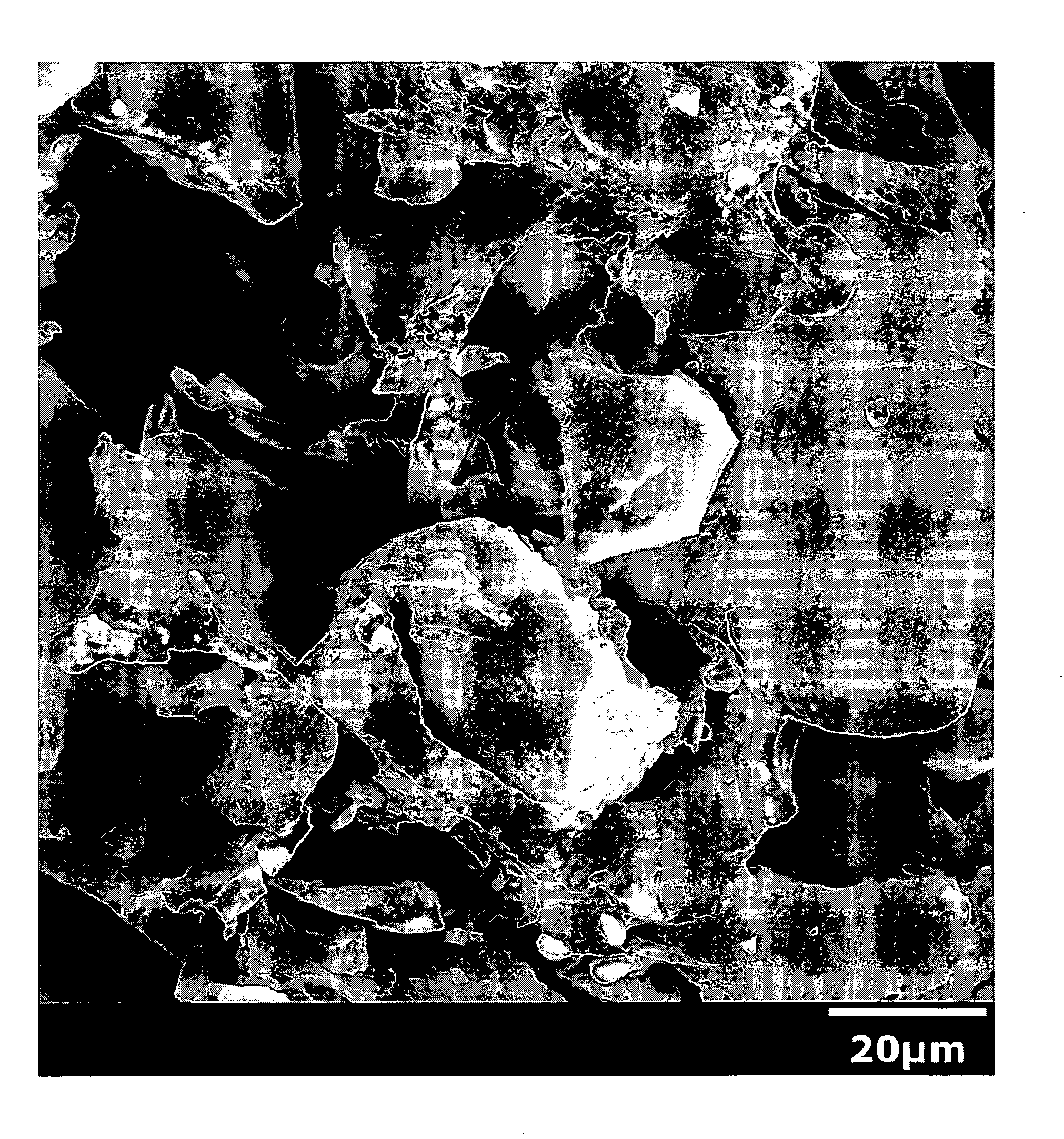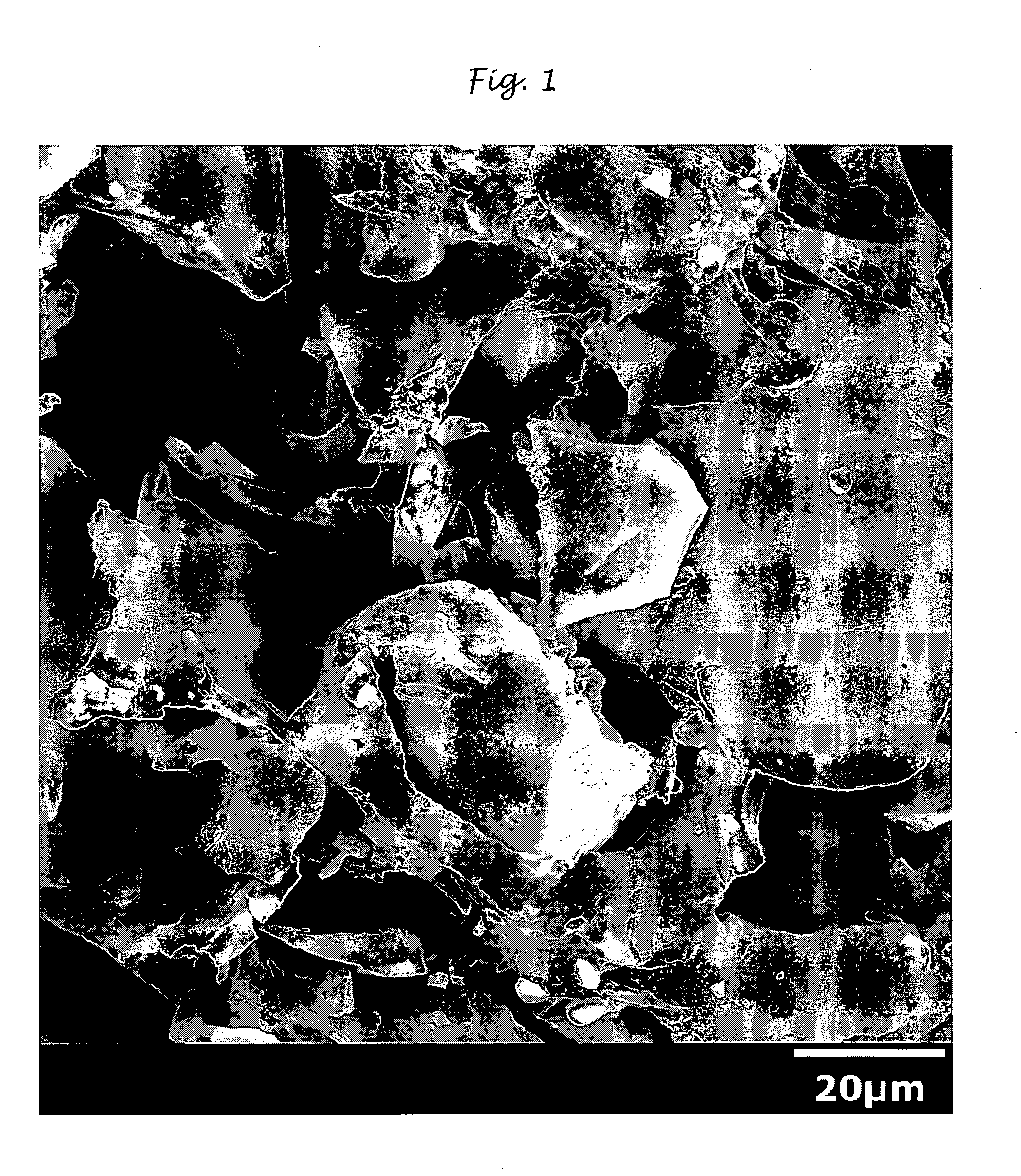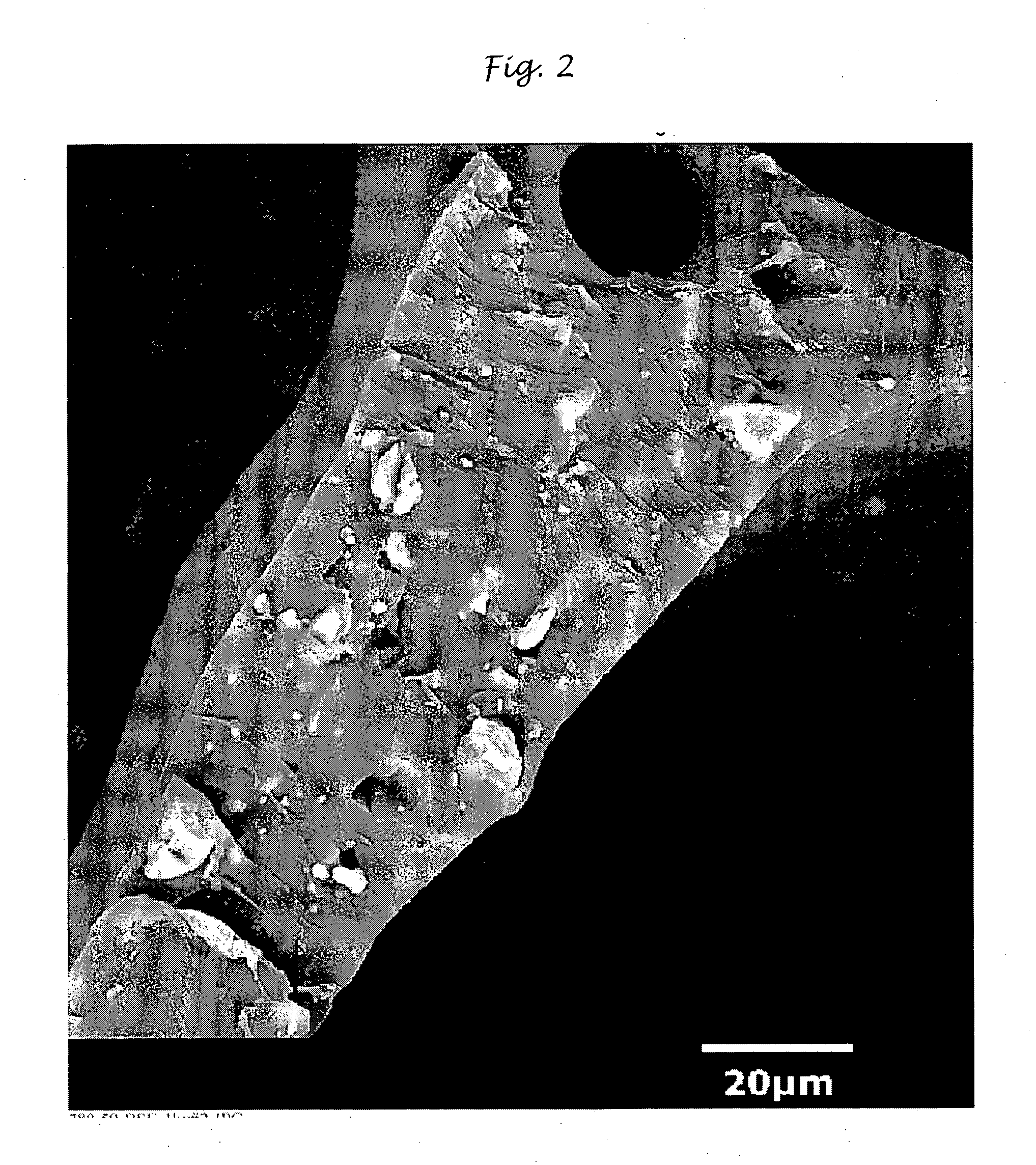Polyurethane compositions with glass filler and method of making same
a technology of polyurethane compositions and glass fillers, which is applied in the direction of transportation and packaging, ceramic layered products, coatings, etc., can solve the problems of unacceptably viscous formulations, affecting so as to improve the uniformity of the filler, less settling and segregation of particles, and the effect of uniform properties
- Summary
- Abstract
- Description
- Claims
- Application Information
AI Technical Summary
Benefits of technology
Problems solved by technology
Method used
Image
Examples
example 1
[0067] A filled dispersion (polyurethane dispersion having glass filler therein) was prepared by mixing in a pint container using a 2 inch Cowles blade rotating at 600 rpm the following components: 1) 10.2 grams of tap water, 2) 174 grams of SYNTEGRA* YA 503 an externally stabilized nonionizable polyurethane dispersion have a solids loading of about 57% by weight (The Dow Chemical Company, Midland, Mich.), 3) 0.2 grams of DREWPLUS L493 a defoamer, (Ashland Specialty Chemical Company, Boonton, N.J.), 4) 5.0 g of SYNPRO, zinc stearate wettable, (Ferro Corporation, Cleveland, Ohio), 5) 2.0 grams of TAMOL 731A pH raising compound (Rohm and Haas Company, Philadelphia, Pa.), 6) 250 grams of Glass Fill C (Potters Industries Inc., Brownwood, Tex.), and 7) 3.74 grams of ACRYSOL 12W a hydrophobically modified ethylene-oxide-based urethane block copolymer thickener (Rohm and Haas Company). The filled dispersion had a total solids content of 80.0% by weight, a Brookfield (RVT) viscosity of 2100...
example 2
[0070] A filled polyurethane dispersion was prepared by mixing in a pint container, using a 2 inch Cowles blade rotating at 600 rpm, the following components: 1) 35 grams of tap water, 2) 175 grams of SYNTEGRA* YA 503 (The Dow Chemical Company), 3) 0.80 grams of DREWPLUS L493 (Ashland Chemical Company, 4) 5.0 grams of SYNPRO zinc stearate wettable (Ferro Corporation, city, state), 5) 200 g. of H&S #7 CaCO3 filler (H&S Whiting Inc., Dalton, Ga.), 6) 100 grams of Q-Cel 6048 borosilicate glass hollow spheres (Potters Industries Inc.), and 7) 0.4 grams of ACRYSOL 8W rheology modifier (Rohm and Haas Company). The filled dispersion had a solids content of 78.4 wt. %, a Brookfield (RVT) viscosity of 16500 cps. (#6 spindle, 20 rpm) and a specific gravity of 1.02 g / cc.
[0071] The Q-Cel 6048 borosilicate glass hollow spheres had a d10 of 8.7 micrometers, d50 of 21.3 micrometers, and d90 of 48.3 micrometers measured using a Malvern Mastersizer. The surface area of the spheres was 0.153 m2 / g. T...
examples 3-6
[0073] Table 1 shows viscosity and pH data for Examples made in the same way as the Example 1 filled dispersion except that the dispersions were made with and without Tamol 731A and replacing Tamol 731A with Trisodium phosphate or NH3OH as shown in Table 1. The raising of the pH prior to the mixing of the filler into the polyurethane dispersion to match the 2 day pH of the system not employing a pH raising compound prior to addition of the glass filler inhibits viscosity build during storage.
TABLE 1InitialpH raisingViscosity,2 DayExamplecompoundcpInitial pHViscosity2 Day pH3None204008.08263008.494Tamol 731A210008.31191008.69(0.5 php)5Trisodium213509.93200009.68phosphate(3 php)6NH3OH182009.69161509.62(3 php)
pHp = parts per hundred parts by weight
PUM
| Property | Measurement | Unit |
|---|---|---|
| specific surface area | aaaaa | aaaaa |
| specific surface area | aaaaa | aaaaa |
| diameter | aaaaa | aaaaa |
Abstract
Description
Claims
Application Information
 Login to View More
Login to View More - R&D
- Intellectual Property
- Life Sciences
- Materials
- Tech Scout
- Unparalleled Data Quality
- Higher Quality Content
- 60% Fewer Hallucinations
Browse by: Latest US Patents, China's latest patents, Technical Efficacy Thesaurus, Application Domain, Technology Topic, Popular Technical Reports.
© 2025 PatSnap. All rights reserved.Legal|Privacy policy|Modern Slavery Act Transparency Statement|Sitemap|About US| Contact US: help@patsnap.com



